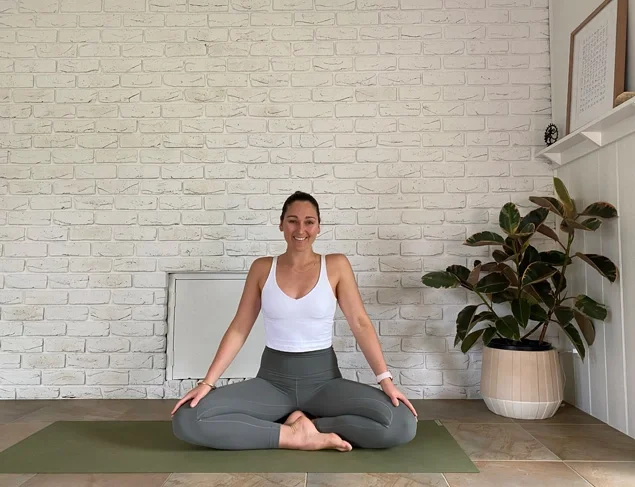Key points:
- Burnout and its symptoms can be broken into 3 parts
- Take the quick quiz to see if you are headed on the path to burnout
- Burnout is individual and complex, but there are 5 key areas of work-life that we can focus on to help lower the risk of burnout
- There are ways to manage and prevent burnout with the right support systems in place
When it comes to burnout how do we recognise if we are on the path to developing it, or are already there?
Burnout and its symptoms can be broken up into 3 parts.
1. Fatigue
- The primary sign of burnout is overwhelming emotional exhaustion. You cannot be said to have burnout without this exhaustion, but it is not enough by itself to diagnose burnout.
- Feeling tired even if getting enough sleep or feeling like you can’t sleep or rest enough.
- Feeling like you don’t have enough energy to deal with tasks that involve emotional or physical effort.
- Lack of motivation even for day-to-day tasks.
- Physical health symptoms like headaches, aches and pains, gastrointestinal troubles, or even heart health problems.
- Difficulty with memory or making decisions.
2. Feeling negative or cynical about work
- People who are experiencing burnout often try to give themselves some distance from work, but as burnout continues they start feeling more negative about work and feel cynical versus optimistic about their work.
- A feeling of discontent or disillusionment with work.
- Feeling disconnected from your colleagues or clients.
- Being disengaged from work, not wanting to be involved in projects or opportunities.
- Not feeling rewarded by work.
- Irritability at work and extending outside of work. Even aggression or anger.
3. Feelings of inefficacy
- Feelings of incompetence, lowered performance or work quality often go with the experience of burnout.
- Avoiding work decisions.
- Feeling unqualified to do the work or questioning if this is the right job for you.
- Taking longer to do work or producing poor-quality work.
Are you heading towards burnout?
Take this quick quiz to discover if you're still in the honeymoon phase or on the way to chronic stress and burnout.
Factors that cause burnout and how to prevent it
Your guide to workplace burnout
Discover simple strategies to help manage workplace burnout with this free guide created by Dr Rob McCartney.
Burnout is individual and complex, but there are particular areas of work-life that we can work on to help lower the risk of burnout. Here are 5 of our top tips on how to prevent it:
- Workload
An easy way to address this is to consider with your manager if the amount of work you have is reasonable and if you need additional resources, time and support.
If tasks are complex or emotionally difficult, ensure you have appropriate recovery time and resources to look after yourself... Do you have any holiday leave to use up? Can you work with some more flexible hours?
- Control
Do you usually feel more engaged and positive if you have input on your work plans? How can you be more actively engaged with the level or type of work you complete, expected outcome and decision making? Have a chat with your manager.
- Rewards
As humans, we all love some sweet rewards! There are so many aspects of your work that can lead to you feeling rewarded or perhaps not-so-well rewarded.
The most obvious consideration is your salary, but also includes recognition, praise, personal satisfaction and other ways of getting something back.
If the rewards you get are not matched with your expectations this may leave you feeling less engaged or invested. This is worth a conversation with your teams and managers. It is also a key factor to consider when you choose a workplace - does it meet your reward expectations?
- Community
Having a sense of ‘we’re all in this together’, that you are in harmony and working with your colleagues, and having a social support network may help protect you against workplace stress. Whereas, a lack of community may worsen stress. Is there some community or social aspects of your job that you could explore?
- Fairness & values
We all like to think we are being dealt a fair hand. If for some reason you feel like your job situation is not fair, this could be making you question your worth or even know what is expected of you. In addition, you will likely have your own personal and professional values, and sometimes (even often for some people) these do not align with your workplace values and culture.
These things need discussion - speak to your manager or your doctor for more advice on what you can do if you feel this is the case for you.

Mindfulness can help lower stress and give you mental space to help recovery.
7 ways to manage burnout
If you are at risk of burnout, or along the pathway to developing it, there are some ways to help manage what you can control.
Just remember, studies suggest that the most effective prevention and management include changes in the workplace at the same time, it’s a team effort.
1. Communication
Talk to your manager or team lead. If the workplace is unaware, keep in mind that change is difficult and could take some time.
7 morning stretches that are (almost) better than coffee
How a morning routine with stretches and movement can help set you up for the day.
2. Time away from work
Take holidays, use your leave, and avoid doing work outside of work hours.
Stepping away from the cause of stress may be helpful for some people.
3. Rest and relaxation
Take time to recover, remember, burnout is an injury. Sleep and low-effort activities may help – this is permission to hang out on the couch and binge on your favourite tv.
4. Exercise
Regular exercise may help energy levels and recovery – but don’t let it become another source of stress, be kind to yourself.
5. Meditation and mindfulness
We’ve all heard about the wonders of mindfulness, it can help lower stress and give you mental space to help recovery. This 5-minute guided meditation from the master mindfulness health program is a great place to start.
6. Hang out with friends and family
Be mindful that burnout can affect our interactions outside of work as well. Making time to have positive interactions with loved ones may help give you a more positive outlook and put a dent in the poor self-image you’ve probably been building up.
7. Mental health support
The pathway to burnout is tough; it’s personal and can mess with your sense of self-worth. It can also exacerbate other mental health concerns. Having someone to give you perspective, help you develop coping skills and offer support can be invaluable. Most workplaces have an Employee Assistant Program you can ask about.
Recovery from burnout
It can take time to recover once you have reached the stage of burnout or chronic burnout. In fact, time seems to be a key factor in recovery.
In order to start recovery, the cause of your stress needs to be managed. It’s also important for programs to include the workplace, with the involvement of managers, for recovery to be effective.
Burnout is a difficult experience, but many people have experienced it and recovered. Being aware of the signs and the causes can help get on top of it early to prevent it from getting worse.
related reads
How to practise self-love (of the mental wellbeing kind)
Brain food vs superfood: what's the difference?
The terms 'brain food' and 'superfood' are often used interchangeably – but there's a key difference. Accredited Dietitian Shivaun Conn explains.
5-minute self-care activities for days when you just can’t even
Self-care doesn’t need to involve a grand plan to visit a health retreat. Even five minutes may make a difference.
Want a happy life? Try these hacks
You can’t hack happiness, but you CAN still be happy in life, whatever it throws at you. Here’s how…
Reviewed by the healthylife Advisory Board July 2022
Dr Rob McCartney is a physician who has specialised in the field of Occupational and Environmental Medicine for over 20 years. His career goal is to maximise the health, wellbeing and productivity of working people. Rob is a passionate and highly experienced doctor with a track record of managing risk and solving problems at the worker/workplace interface. Rob is a member of the healthylife Advisory Board.









